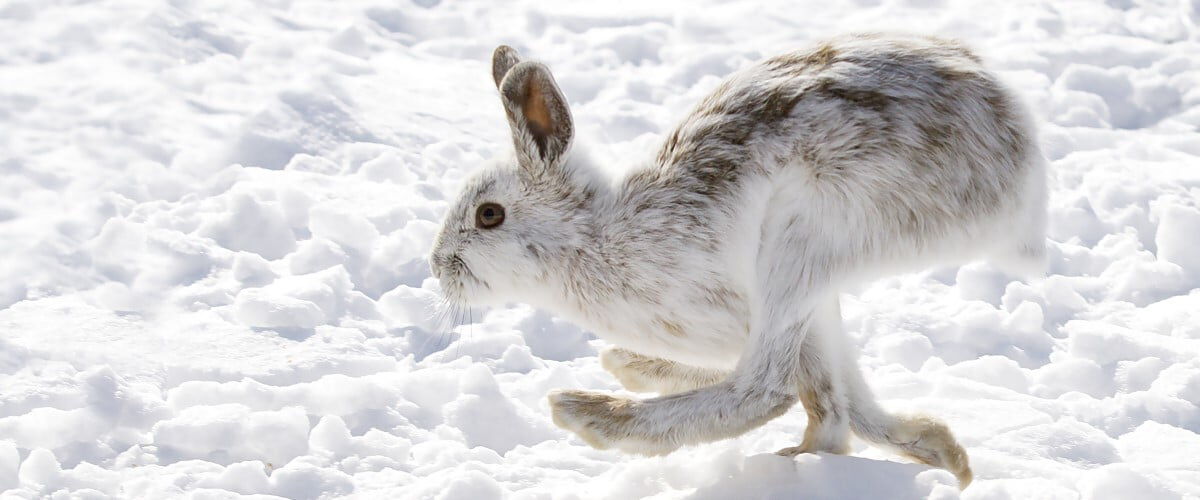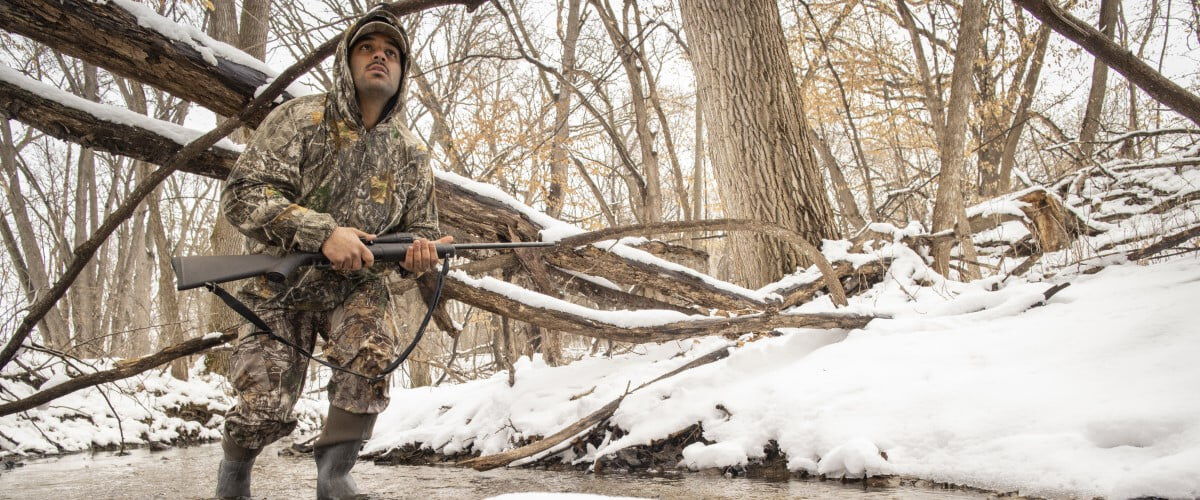
Some hunters dread winter, when the shotguns and big game rifles have been put away for the season. But in many areas of the West, North and Northeast, snow and cold usher in a new opportunity for adventure: the quest for snowshoe hares.
Although they’re generally less popular than cottontails, they’re fun to take on with a rimfire, and they’re good on the table as well. Here’s what you need to know to target them this season.
Hare Habits
Larger than cotton-tailed rabbits, snowshoe hares are named because of their large hind feet. They’re also notable because their coats turn from rusty brown in summer to white during winter, helping camouflage the hares from predators. And because of their behavior and the environs they frequent, they’re perfect for cold-weather rimfire fun. All you need is a .22 and some basic knowledge.
Snowshoe hare habitat varies a bit from east to west. However, they primarily inhabit areas with thick ground cover, such as conifer stands, wetland edges and second-growth forests, including patches of spruce, willow, birch, sumac and alder.
They’re are most active at twilight and night, but they hide in shallow depressions concealed by low-lying cover during the day. Unlike cottontails, they do not use underground burrows to hide. Their No. 1 defense is to remain still and wait for danger to pass. And when they’re fully camouflaged during the white depths of winter, they can be difficult to spot.
Tactics
Solo rimfire hunters typically slip into areas of good cover and slowly attempt to spot and stalk hares. During winter, hares often gravitate to south-facing slopes, where they can soak up sun. Walk slowly and pause often as you slip through a spot. Look for fresh tracks in the snow, as these can reveal hare travel areas (obviously, fresh snow is best when trying to track snowshoes). Stop near likely looking areas, and search for hares hiding in thick cover. It’s best to look for their large black eyes or black-rimmed ears, as these will usually be the most visible. Sometimes, it pays to bend down or look at various angles as you search, as hares can be difficult to spot when well hidden. If you consistently flush snowshoes, you’re probably walking too fast and not halting to look enough.

When you spot a snowshoe, make sure you have a clean, ethical shot. Ground cover can be heavy, and you want to ensure you have an unobstructed line of sight to your target. Headshots are ideal, of course, as they dispatch hares instantly and don’t waste any meat. It’s usually best to aim for an eye, as it’s probably the most visible feature on a well-camouflaged hare.
Most types of rimfire ammo will work just fine on snowshoes. A 22 LR cartridge with a controlled-expansion bullet that mushrooms on impact is ideal for most types of small game when overpenetration isn’t a concern. Good choices include the Stinger, Velocitor HP, Mini-Mag HP and Sub-Sonic HP. If you’re worried about overpenetration, cartridges with segmenting hollow-point bullets also perform well. Upon impact, the bullets fragment into three separate petals, producing three wound cavities and greatly reducing the chances of a pass-through. Quiet-22 22 LR fired through a bolt-action rifle will also be quiet and deadly on hares.
Table Fare
Although snowshoes aren’t considered as good to eat as their cottontail cousins, they actually make fine table fare. They can be prepared many ways, but it’s often best to cut them into five pieces—forelegs, hind legs and backstrap—and braise them until the meat is tender.
Admittedly, collecting a couple of snowshoe hares for the pot might not rate much of a cool factor nowadays. However, if an invigorating walk in the crisp winter woods and a great meal afterward seem appealing, you’ll probably want to grab your .22 and give snowshoe hare hunting a try this season.